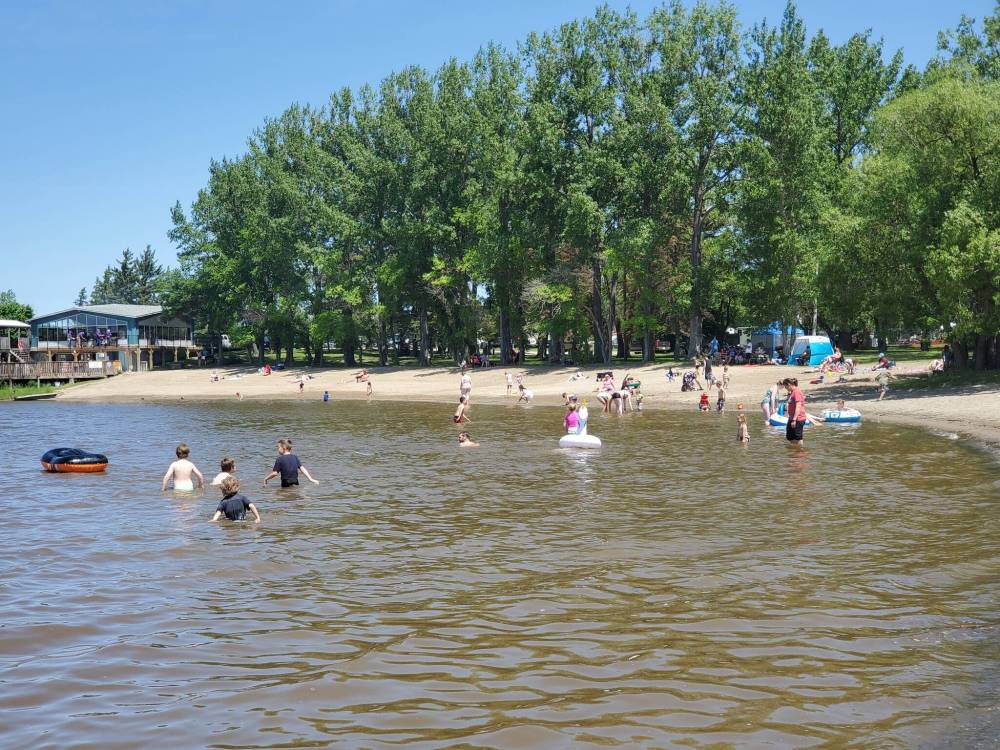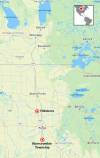Algae advisories issued for beaches
Advertisement
Read this article for free:
or
Already have an account? Log in here »
To continue reading, please subscribe:
Monthly Digital Subscription
$0 for the first 4 weeks*
- Enjoy unlimited reading on winnipegfreepress.com
- Read the E-Edition, our digital replica newspaper
- Access News Break, our award-winning app
- Play interactive puzzles
*No charge for 4 weeks then price increases to the regular rate of $19.00 plus GST every four weeks. Offer available to new and qualified returning subscribers only. Cancel any time.
Monthly Digital Subscription
$4.75/week*
- Enjoy unlimited reading on winnipegfreepress.com
- Read the E-Edition, our digital replica newspaper
- Access News Break, our award-winning app
- Play interactive puzzles
*Billed as $19 plus GST every four weeks. Cancel any time.
To continue reading, please subscribe:
Add Free Press access to your Brandon Sun subscription for only an additional
$1 for the first 4 weeks*
*Your next subscription payment will increase by $1.00 and you will be charged $16.99 plus GST for four weeks. After four weeks, your payment will increase to $23.99 plus GST every four weeks.
Read unlimited articles for free today:
or
Already have an account? Log in here »
Blue-green algae advisories were in place for a handful of Manitoba beaches Wednesday — ahead of an August long weekend that is expected to be warm and sunny — after high levels were detected during water-quality tests.
The province urged people not to swim, drink or make contact with water where green scum is visible, and to keep pets and livestock away because toxins, if present in the algae, can be fatal to animals.
People should avoid eating fish that appear unhealthy.

MIKAELA MACKENZIE / FREE PRESS FILES
Blue-green algae can cause diarrhea, stomach cramps, skin rashes and eye irritation.
Advisory signs were recently posted at beaches at Brereton (south) in Whiteshell Provincial Park, Hoopers, Minnedosa and Sandy lakes, and Plum Coulee, Stephenfield and Rivers reservoirs, following tests by Manitoba government staff, the province said.
“It’s a little out of the ordinary because — for the same reason as the wildfires — it’s been a little short of rain,” Minnedosa Mayor Ken Cameron said. “It’s been quite a few years since we’ve had such a dry spell.”
High levels of nutrients (phosphorus and nitrogen), and warm and calm weather are among the ideal conditions for blue-green algae (cyanobacteria) to develop.
“This year, a prolonged drought period followed by intermittent precipitation events, low flow, low water levels, and warmer temperatures may be contributing factors for bloom formation in Manitoba lakes,” a spokesperson for the province said. “However, a reduction in light availability due to wildfire smoke may be delaying the growth of algae and bloom development in some cases.”
These factors vary across bodies of water, the spokesperson said.
It’s not uncommon for blue-green algae advisories to be issued in Manitoba, Cameron said. Large blooms in sections of Lake Winnipeg have been well-documented in the past.
The provincial spokesperson said the extent of algal growth on Lake Winnipeg remains below the historical 25th percentile for this time of year, as per Environment and Climate Change Canada.
It’s hard to say when Lake Minnedosa’s advisory will be lifted, but provincial officials will continue testing the water, Cameron said.
The advisory shouldn’t discourage people from visiting Minnedosa, he said, as the town prepared to host its annual Rockin’ the Fields music festival from Friday to Sunday.
“Just because the lake’s got some algae in it, there are still a ton of fun things to do in the town of Minnedosa,” he said.

SUPPLIED
Minnedosa Beach is among those under advisory owing to higher levels of blue-green algae.
The province said blue-green algae is difficult to predict, and it may disperse quickly or last for several days or weeks.
Blooms form floating clumps or scums, occasionally making water look like thick pea soup or paint. They may emit a strong, unpleasant odour.
Blue-green algae can cause diarrhea, stomach cramps, skin rashes and eye irritation.
Most small water treatment systems used by home or cottage owners are unable to removal algal toxins, while boiling or chlorination will not make the water safe for human consumption, the province said.
Manitoba Environment and Climate Change monitors more than 50 beaches for E. coli, blue-green algae and microcystins, which are toxins produced by blue-green algae. Not all algal blooms produce toxins.
Algae toxin signs are not currently posted at any beaches where regular testing occurs, as per the province’s website.
chris.kitching@freepress.mb.ca

Chris Kitching is a general assignment reporter at the Free Press. He began his newspaper career in 2001, with stops in Winnipeg, Toronto and London, England, along the way. After returning to Winnipeg, he joined the Free Press in 2021, and now covers a little bit of everything for the newspaper. Read more about Chris.
Every piece of reporting Chris produces is reviewed by an editing team before it is posted online or published in print — part of the Free Press‘s tradition, since 1872, of producing reliable independent journalism. Read more about Free Press’s history and mandate, and learn how our newsroom operates.
Our newsroom depends on a growing audience of readers to power our journalism. If you are not a paid reader, please consider becoming a subscriber.
Our newsroom depends on its audience of readers to power our journalism. Thank you for your support.
History
Updated on Wednesday, July 30, 2025 5:40 PM CDT: Adds comment from mayor, province





